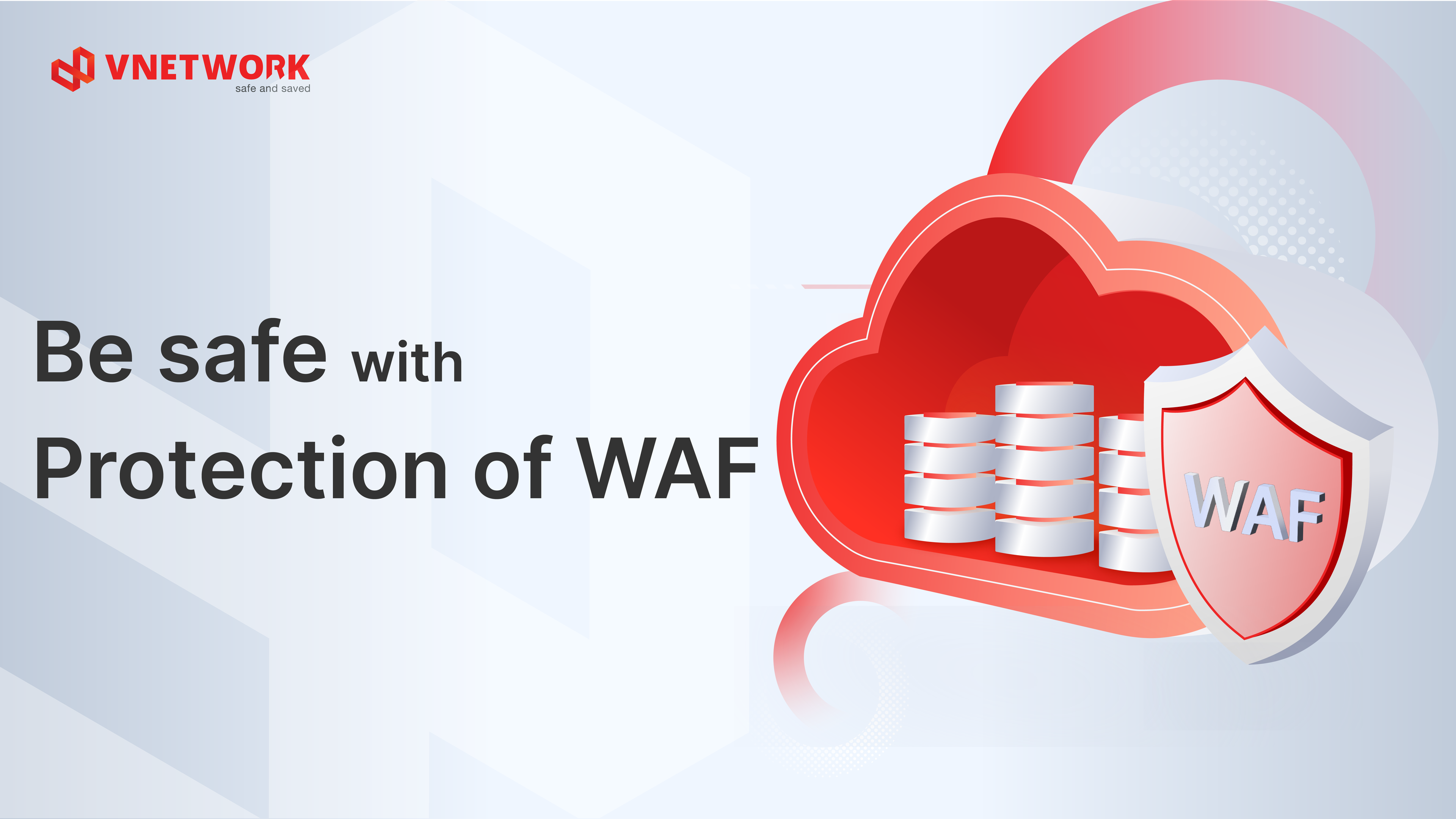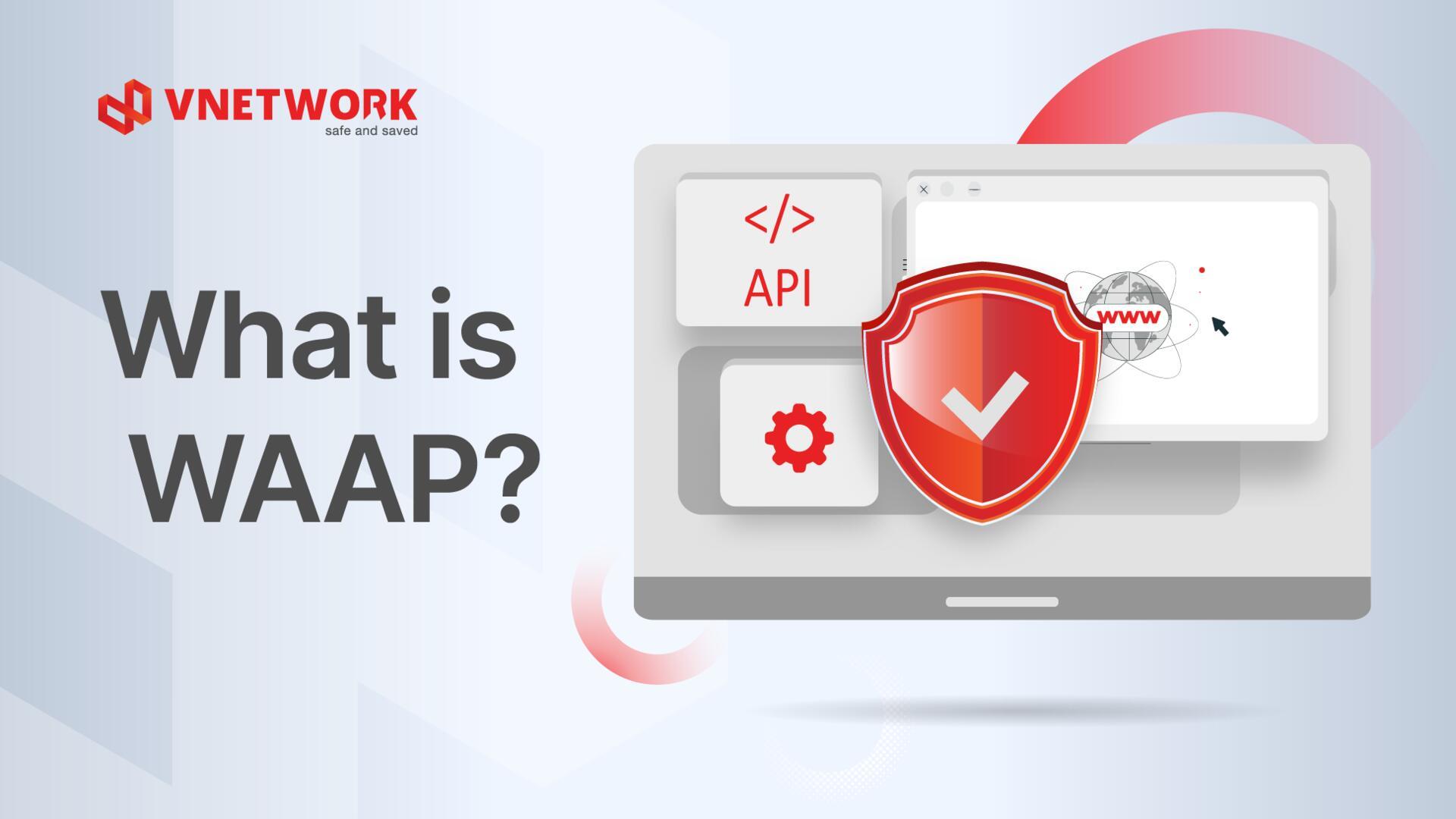What is WAF?
What is WAF? WAF (Web Application Firewall) is a security system designed to protect web applications from network attacks and security vulnerabilities. By inspecting and filtering HTTP/HTTPS traffic of web applications, WAF helps prevent common types of attacks targeting applications. WAF uses policies or rules to weed out malicious traffic, allowing for rapid adjustment to deal with different types of attacks. This makes WAF an important part of ensuring security and preventing attacks like DDoS.
Role of WAF at Layer 7
What is the role of WAF? WAF has three main roles at Layer 7 of the OSI protocol: protecting the application layer, controlling traffic and detecting attacks in different forms. Specifically, those roles are:

Role of WAF at Layer 7
Application layer protection
WAF helps protect layer 7 from targeted attacks at the application level. This includes preventing attacks such as SQL injection, cross-site scripting (XSS) and other application layer attacks.
Access control
WAF allows administrators to control access to web application content and functions based on request such as user information, IP address, and many other factors.
WAF detects application layer attacks
WAF is capable of detecting suspicious activities at the application layer, allowing to identify the difference between valid user and system requests and the characteristics of attacks. In case of detecting signs of danger, the system will automatically prevent it from affecting the application and database.
What is WAF operation?
What is WAF operation? WAF operation is based on inspecting, filtering and protecting web applications from attacks by using security rules and policies. Specifically, WAF operations include the following steps:

How does WAF model work
Inspect and monitor every HTTP/HTTPS request
The WAF tracks every HTTP/S request to the web application. The system will then analyze these requests to determine whether they are valid or indicative of attacks.
Apply policies to identify malicious traffic
WAF uses policies or rules to determine if traffic is malicious or safe. These policies are set in advance and can be customized to the specific needs of the web application.
WAF blocks malicious traffic
If WAF detects traffic that does not conform to security policies, WAF will block this traffic before it reaches the web application. This makes it impossible for attacks to reach the web.
WAF protects data and applications
WAF ensures that data is not stolen or unauthorized alteration and protects the integrity of the web application.
Distinguish between blocklist and allowlist
Both blocklist and allowlist are related to access management but have different goals and operations. The distinction between blocklist and allowlist WAF is based on how they manage and handle network traffic to a web application:
Blocklist WAF (WAF based on block list)
Blocklist WAF works based on a blacklist (blocklist) of IP addresses or domains identified as malicious. WAF intercepts traffic from these sources and allows all other traffic. This is often used to block suspicious sources or malicious IP addresses.
Allowlist WAF (WAF based on whitelist)
Allowlist WAF works in the opposite way of blocklist WAF. The system only allows traffic from the whitelist (allowlist) of IP addresses or domains that are determined to be safe and rejects all other traffic. This ensures that only predefined sources can access the application.
In summary, the main difference between blocklist and allowlist WAFs lies in how they manage the decision to allow or deny traffic. Blocklist rejects sources identified as malicious, allowlist only allows sources identified as safe.
Types of attacks WAF can block
WAF can prevent attacks such as SQL Injection (SQLi), Cross-Site Scripting (XSS) and many other types of attacks at the web application level. Here is a list of attacks that WAF can effectively prevent:
SQL Injection (SQLi)
SQL Injection is a type of attack in which hackers attempt to insert malicious SQL queries into web requests to exploit application vulnerabilities. WAF can detect and block requests containing SQL Injection signs, ensure uncontrolled SQL queries cannot execute.
Cross-Site Scripting (XSS)
XSS is an attack in which hackers insert malicious JavaScript code into websites to attack end users. WAF can inspect and remove malicious code from requests to applications, prevent the execution of malicious JavaScript code in the users browsers.
Cross-Site Request Forgery (CSRF)
CSRF is an attack method that performs unauthorized actions on users accounts when logged into the application. WAF ensures that unauthorized requests can’t be executed and prevents the possibility of hackers tricking users into performing unwanted actions.
DDoS Attack Mitigation
WAF can identify and limit web application traffic to prevent Distributed Denial of Service (DDoS) attacks. Such attacks involve multiple sources flooding an application simultaneously, which causes overload and disrupts normal operation.
Protection Against Various Application Layer Attacks
WAF has the capability to detect and prevent many other application layer attacks, which include Denial of Service (DoS) attacks, unauthorized resource access, code injection attacks, and various other types. WAF safeguards applications against a wide range of threats and ensures data and system integrity and security.
What is the way to respond to new threats of WAF under VNIS-Platform?
After knowing what the role and operation of WAF is, you can see that this is a very important and necessary service for web applications. But currently, not all providers can provide quality WAF solutions for businesses. If administrators are looking for a reliable WAF service provider, come to VNETWORK Company.
VNIS WAF is a comprehensive Web/App/API security solution of VNETWORK Joint Stock Company. Our products have been recommended by top organizations in the field of cybersecurity such as Gartner and are trusted by more than 2,000 customers globally in many different fields and industries.
VNETWORK VNIS WAF stands out by merging the power of Multi CDN, with CDN bandwidth up to 2,600 Tbps and Cloud WAF with more than 2,000 WAF security rules according to OWASP Top 10 standards. This solution will help enhance security and the ability to respond to increasingly complex web and application environments.

VNIS's WAF system provides comprehensive Web/App/API security solution
Application Attack Prevention
VNIS WAF thwarts all types of application attacks including SQL injection and XSS. The system uses more than 2,000 security rules to detect and block these threats and eliminate OWASP security vulnerabilities.
Maintain a database of security threats
VNIS WAF maintains a database of security threats managed by a team of cybersecurity experts. By monitoring the network and updating the rule set, the system can identify and block the latest threats.
Comprehensive Attack Analysis
WAF identifies every characteristic of attacks by analyzing the source, form and traffic. Through the dashboard, the VNIS system provides detailed information about the attack to help administrators easily adjust the set of security rules.
Management and updates on new threats
VNIS WAF always monitors and updates the database of the latest threats. This safeguards the websites from emerging threat vectors.
If you want a comprehensive security solution, please contact VNIS at Hotline: (028) 7306 8789 or email contact@vnetwork.vn or sales@vnetwork.vn.




